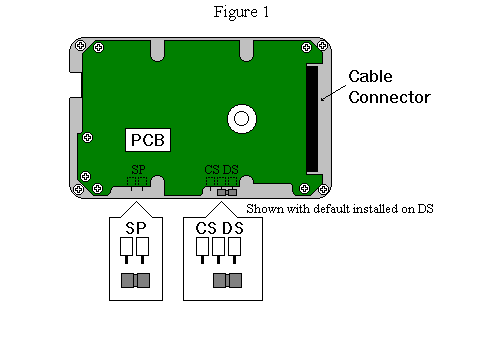
The following values are used to set the PC/AT CMOS Table:
Drive 127AT 170AT 256AT 341AT 514AT Cylinder 538 723 1011 997 Heads 10 11 15 16 Sectors 62 63 44 63 Write Precomp 65535* 65535* 65535* 65535* Landing Zone 538 723 1011 997 Configuration Disks 1 2 2 3 4 Head/Recording Surfaces 2 3 4 6 8 Standby to Drive Ready (sec) 2.0 2.5 2.5 2.8 3.0
Track Density 3100 tpi Flux Density 53,700 fci Recording Density 71,600 bpi Encoding Method RLL 1,7 Average Seek Time 17 ms Track-to-Track Seek Time 5 ms Full Stroke Seek Time 24 ms verage Rotational Latency 6.66 ms Rotational Speed 4500 RPM Internal Data Rate 22 to 36 MB/sec Burst Transfer Rate (buffer) 13 MB/sec Buffer Size 128 KB Interleave 1:1 Projected Field MTBF 350,000 hours Preventive Maintenance Not Required Uncorrectable Error Rate <1 in 1014 Error-Correction Method Reed Solomon Warranty* 1 year PHYSICAL SPECIFICATIONS inches (mm) Width 2.75 (70) Length 3.94 (100) Height Daytona 127, 170 & 256 0.50 (12.5) Daytona 341 & 514 0.75 (19) ounces (gm) Daytona 127 4.4 (125) Daytona 170 4.6 (130 Daytona 256 4.6 (130) Daytona 341 6.4 (180) Daytona 514 6.6 (185) ENVIRONMENTAL LIMITS Operating Temperature (:C) 5 to 55 Non-condensing Humidity (%) 10 to 90 Shock (G, 11 ms) 10 Vibration (G, peak-to-peak) 1 Altitude (ft.) -200 to 10,000 Non-Operating Temperature (:C) -40 to 65 Non-condensing Humidity (%) 10 to 90 Shock4 (G, 2 ms) 300 Vibration (G, peak-to-peak) 5 Altitude (ft.) -200 to 40,000 Sound Pressure Maximum @ Idle (dBA) 33 POWER SPECIFICATIONS Nominal Voltage +5 Voltage Margin (%) 15 Typical Power Draw5 (W) Standby 0.2 Idle Daytona 127, 170, & 256 1.2 Daytona 341 & 514 1.4 Active Daytona 127, 170, & 256 1.9 Daytona 341 & 514 2.1 Operating Read Write Seek Daytona 127, 170, & 256 2.5 2.6 2.5 Daytona 341 & 514 2.6 2.8 2.7 Peak Spin-up Current (mA) Daytona 127, 170 & 341 1,200 Daytona 256 & 514 1,300 FEATURES DisCache. and WriteCache Defect Free Interface. Firmware Adaptive Segmentation DiskWare AutoRead and AutoWrite ShockLock AutoTransfer AutoIdle and AutoPark Local Bus with I/O Channel Ready StackWrite Fast Multiword DMA Support MCC Compatibility 112-bit Reed Solomon ECC On-the-Fly AT Bus Cable Select
*= The Quantum Daytona does not require Write Pre compensation, your CMOS setting should be set to reflect that this feature is not enabled. A value of 65535 is a number that many BIOS manufactures use to disable this feature if the value 'none' is not present.
The Daytona disk drive has three drive mode jumper options; DS, SP and CS. To configure the drive as:
The SP jumper is only used when the second drive in a two drive
configuration does not support DASP. DASP (Drive active / drive
1 present) is a CAM (Common Access Method) defined signal that
indicates the presence of a second drive, DASP is used during
power on initialization and after a reset. Prior to this definition,
products were introduced which did not utilize this method to
detect the presence of a second drive. The SP jumper is only used
on the MASTER drive, with the DS jumper, when the second drive
does not support DASP.
The CS (Cable Select) jumper is only used in systems that support
this feature. Cable Select allows for each IDE disk drive to be
jumped the same and the position on the cable determines the ID.
This requires special cable and both drives on the interface would
have to support this feature.
